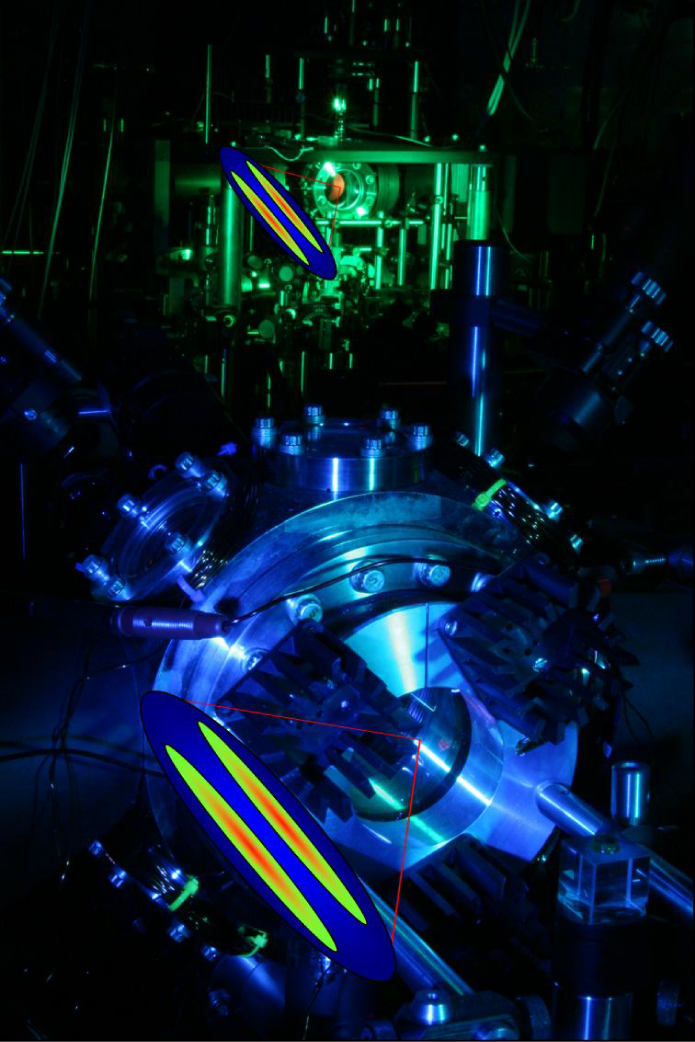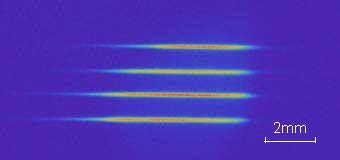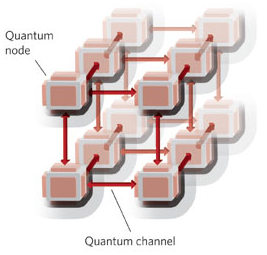 Quantum
Networking with Atomic Ensembles
Quantum
Networking with Atomic Ensembles
Overview
453,
1023-1030 (2008).
Recent Work
Our Interest
 Picture of the two first nodes of our elementary quantum network. Photo by Nara Cavalcanti |
The
collective effects of atomic ensembles provide another
means to control the light-matter interface. Our interest is to develop the physical resources that enable quantum repeaters, thereby allowing entanglement-based quantum communication tasks over quantum networks on distance scales much larger than set by the attenuation length of optical fibers, including quantum cryptography or quantum teleportation. We worked with ensembles (1, 2 and even 4) of cooled cesium atoms in magneto-optical traps. Non-classically correlated photon pairs with a programmable delay interval have been first generated and, additionally, used as a source of conditional single photons. For more information, please visit our previous homepage. |
Recent Work
| [2] "Entanglement of spin waves among four
quantum memories" K. S. Choi, A. Goban, S. B. Papp, S. J. van Enk, and H. J. Kimble, Nature 468, 412-416 (2010) Caltech Press Release |
|
 The quadripartite atomic entanglement is generated for four collective atomic modes of the four ensembles. Images result from background-subtracted fluorescence of the four atomic ensembles [2]. |
Very
recently, we demonstrated measurement-induced
entanglement stored in four atomic memories;
user-controlled, coherent transfer of the atomic
entanglement to four photonic channels; and
characterization of the full quadripartite entanglement
using quantum uncertainty relations [2]. Click here to view the movie of the 3D rendering of the entanglement parameters for the dissipative dynamics of atomic entanglement. |
|
[3] "A state-insensitive, compensated
nanofiber trap" C. Lacroûte, K. S. Choi, A. Goban, D. J. Alton, D. Ding, N. P. Stern and H. J. Kimble, New J. Phys. 14 (2012) 023056. [4] "Demonstration of a state-insensitive, compensated nanofiber trap" |
|
Simulation of Trapping Potential [3,4]. |
To go beyond four
ensembles, we hope to explore a system for more scalable
light-matter
interface. The fiber-trapped atom array becomes
a natural candidate. Most recently, we have experimentally realized an optical trap that localizes single Cs atoms ~215 nm from surface of a dielectric nanofiber [3,4]. |
Team members:
Principal Investigator:
H. Jeff. Kimble, William L. Valentine Professor of Physics
Post-Docs:
Martin Pototschnig, Chen-Lung Hung
Graduate Students:
Akihisa Goban, Ding Ding, Juan Muniz
Collaborator:
Kyung S. Choi, KAIST
Collaborators on tapered-fiber fabrication
Daniel J. Alton, Clement Lacroute, Pol Forn-Diaz, Andrew McClung
Former Members:
Kyung Soo Choi, KAIST
Scott Papp, NIST Boulder
Julien Luarat, ENS-LKB, Paris
Hui Deng, University of Michigan
Chin-Wen (James) Chou, NIST Boulder
Daniel Felinto, University of Recife
Sergey Polyakov, NIST Optical Technology Division
Warwick Bowen, University of Otago
Alex Kuzmich, Georgia Institute of Technology
